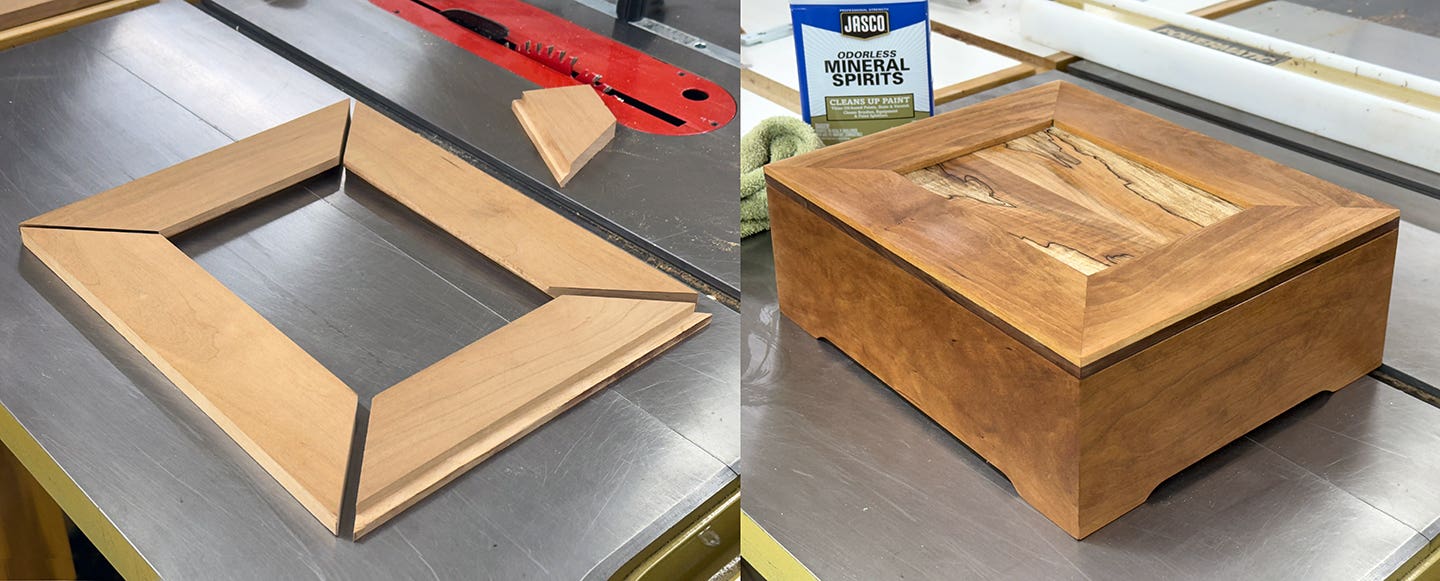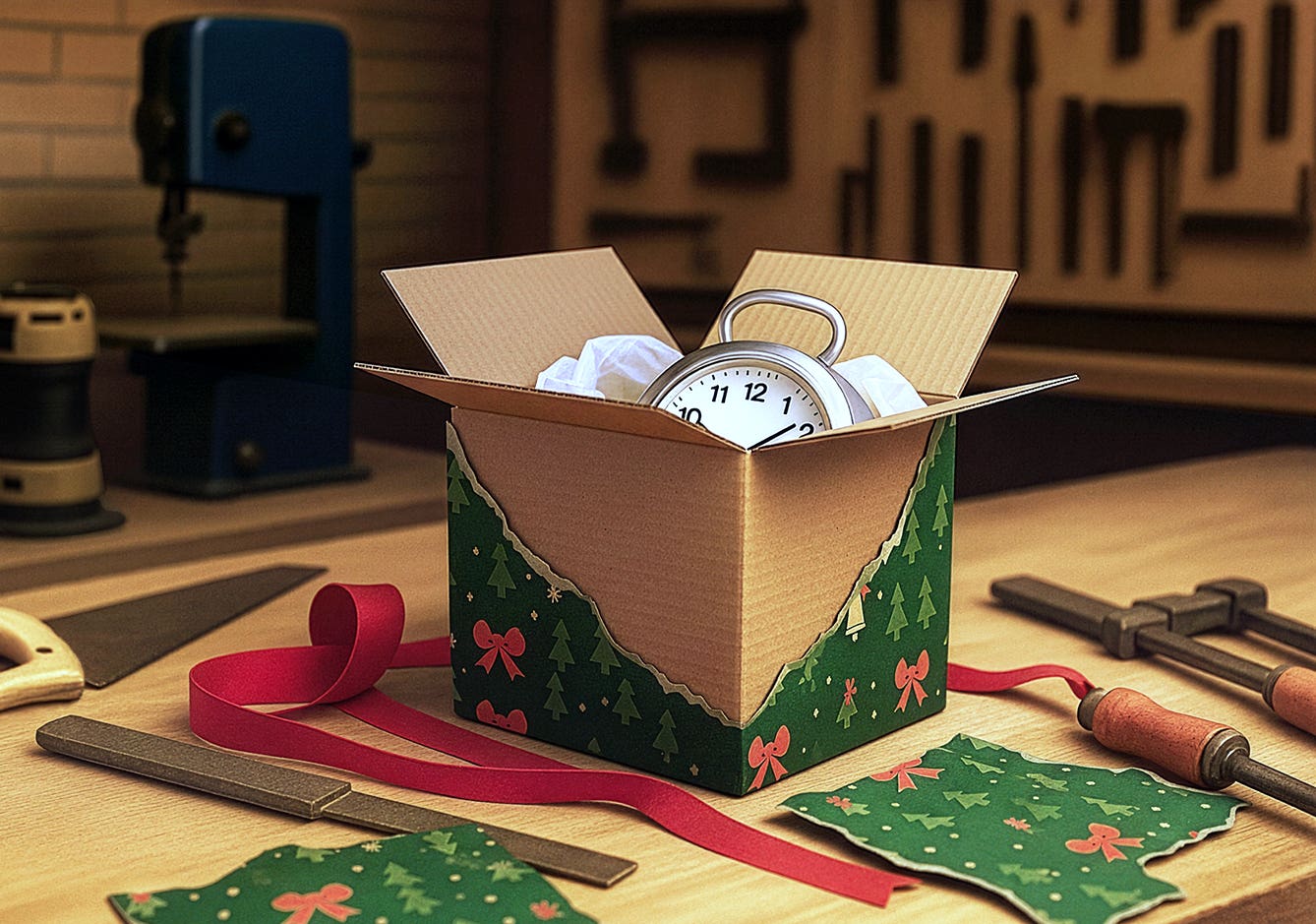Crackle can create an eye-popping effect
My wife and I recently went to a well-known furniture outlet store to look at a curio cabinet. Prominently displayed was a reddish cabinet with heavy crackle and a black,…
My wife and I recently went to a well-known furniture outlet store to look at a curio cabinet. Prominently displayed was a reddish cabinet with heavy crackle and a black, or almost-black, glaze. Crackle finishes have waxed and waned in popularity, but since the late 1970s there has been a steady demand for the technique used to produce those finishes. While there are many methods of producing a crackle finish, most involving glue as a breaking coat, none are easier or more controllable than a good crackle lacquer.
{loadposition position10}
The principle of crackle lacquer involves differences in the surface tension in diverse coatings and another coating applied over the first coating. The crackle lacquer applied over a gloss subcoat shrinks rapidly and breaks or separates, leaving several different patterns and textures.
The size of the crackle is determined in part by the thickness of the film and the rate of drying. The more rapidly the film dries, the finer or smaller the crackle will be. A thinner film will produce a finer crack. Adding reducer to the lacquer to reduce the viscosity and film thickness will produce a finer crack. Drying the finish rapidly will produce a finer crack. The crackle effect is often called craquelure, particularly when it refers to the fine cracks in a painting or other art object, and the texture and pattern can be described in terms of "fissures" and "islands."
Thicker crackle can be produced by applying a heavy gloss lacquer, either in a clear or colored form, and then applying crackle lacquer heavily over the gloss coat before that first coat has had time to fully harden.
Other effects
The crackle lacquer will cause the colored or clear subcoat to crack along with the crackle lacquer, increasing the depth of the fissures. Interesting effects can be produced in this manner. For example, the finisher could apply coats of lacquer in different colors, allowing the first coat to dry thoroughly, the second coat to dry only to the touch and, finally, the crackle coat. The crackle and the partially dried colored lacquer below would crack, revealing the initial basecoat color below.
The texture of the ground, or the surface onto which the crackle lacquer is applied, will affect the texture and the pattern that results when the crackle lacquer breaks. For instance, wire-brushing the gloss subcoat or stroking it once with 60-80 grit sandpaper will leave a coarse scratch pattern. When the crackle lacquer is applied, it will break where it is thinnest; that is, over the peaks of the scratch. Done properly, this will leave a brush-mark effect, suitable for emulating the cracking that would occur over time in a brushed-on paint.
The texture of the substrate should always be considered when crackling. A very smooth substrate will allow the most consistent pattern, although the preparation of the crackle lacquer and the application will also play a part.
Some years ago, I wrote a specification for a crackled wall in a well-known restaurant in Dallas, based on what the client told me he wanted. I had numerous conversations with the finisher (a painting contractor who assured me he was great with lacquer). After the product was finished, an irate client, embarrassed finisher and confused architect demanded that I come down and look at the finished project. From a foot away, there was no evidence that crackle had even been applied, but a closer look revealed the problem. At the last moment, without informing the finisher or me, the architect had decided to have the wall stuccoed. The crackle lacquer broke over the ridges of the stucco. The pattern and texture of the stucco so visually dominated the wall that the crackle became invisible.
Two issues arise with crackle lacquer. Some people expect it to be entirely uniform over an entire piece. It will not be. Most people overdo it. Often just an accent in a few spots - a corner or two - of maybe just one edge will be sufficient. Crackle lacquer is available in aerosol cans, so it can be easily applied to a spot without having to load up the spray gun. Applying it by brush is less effective in many cases.
Crackle lacquer can be found in clear or colors. Most colorants that will go into lacquer, both pigment and dye, will work in the crackle lacquer as well.
New glazes
Dry glaze has hit the market in the last few years. You might hear names like Amazing Glaze, Break-Away Glaze and Powder Glaze, but they differ from standard oil glazes in that they dry very quickly and are wiped off with abrasive pads, steel wool, cloth or brush. They may or may not contain solvents that establish a solvent bond with the subcoat, but are generally easier and faster to use than traditional glazes. Some that don't bond well with the subcoat must be treated gently to avoid removing too much. They can usually be topcoated almost immediately after wiping to color and generally don't require locking in with vinyl sealer.
Traditional oil-based glazes are tricky to work with in a water-based system, so manufacturers have water-based glazes that tend to dry a bit faster than you might be used to. Practice before committing to an important piece.
A "dirty" finish is another technique for a freshly applied milk paint finish. Dusty wax, a combination of mineral spirits, paste wax and a powdered solid such as pumice, is used much like a glaze to achieve a dusty, dirty and old look in the finish. It can be used over a fairly glossy topcoat and buffed to a lower sheen. This technique is often used on picture frames and furniture. Finding premixed dusty wax can be difficult, but it is easy to make. n
Greg Williams, formerly senior touch-up and finishing instructor for Mohawk Finishing Products, is now a freelance instructor and consultant for finishing and touch-up. gregalwil@yahoo.com.
This article originally appeared in the December 2010 issue.







